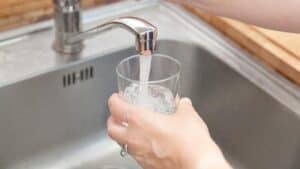
How Safe Is Our Tap Water
Should we be concerned about giving it to our dogs? I must admit I’ve never been all that concerned about our drinking water, I guess we all just take it for granted it’s safe here in the UK. But just recently
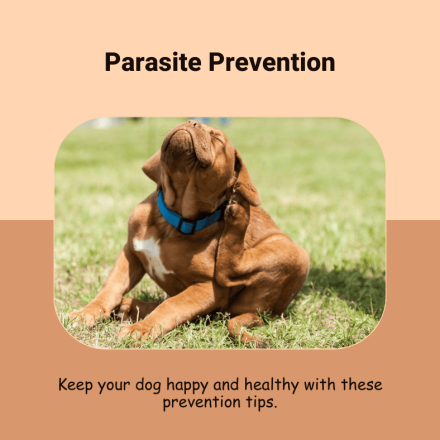
I feel many are missing a trick here, because we need to look at our dogs as a whole and not just sections.
What I mean by this is, when we have a health issue flag up, we tend to go headfirst into just the treatment. Same goes to rid the fleas. We never ask why my dog’s been a magnet for fleas. When what’s really needed is to evaluate our dog’s whole health system. This mean’s not running to treat with chemicals every time. I’m not a fan of the vet monthly packages where they offer a constant barrage of chemical parasite treatments for dogs, when there’s no Chrystal ball apart from home testing kits for worms, which vets never offer or use, more about that below.
You might think where is she going with this but it’s so important to look into your dog dietary intake, is your dog’s food average, dry or tinned, have you studied the labels and researched the quality. We are all very familiar with our own health and what we should and shouldn’t be eating to fuel our bodies to get the best out of them, to keep them healthy. We want to avoid becoming ill where possible. This is what’s called preventative.
Dog’s gut microbiome needs to be healthy and balanced. Gut microbiome is the Furness to all life’s living being’s health. If your feeding starchy ultra-processed foods, then you’re fuelling the bad bacteria. Imagine how unhealthy you’d become if you ate at Maccy D’s 5 days a week.
This is incredibly important and something I go on and on about because I understand the huge role it plays and how really important it is.
Improving your dog’s daily food intake can achieve incredible positive health changes for them and when you think about it, this is the easiest yet most effective thing you can do for them, to improve their health.
Parasites aren’t so drawn to healthy animals. This is the case across all species.
Non-chemical, Natural Flea/Tick prevention for dogs Is usually best started at the end of February, beginning of March. After having a rest period over the wintering months.
I’m not one for using chemicals of any sorts on my dogs. Dog owners I feel are pressured these days into to thinking this is the only way to keep our dogs safe from pest’s.
It’s just not the case.
Toxic flea treatment work on the basis of attacking the flea & tick’s nervous system to kill.
Imagine what it’s doing to your poor dog’s nervous system over time. There’s not a chance it’s not affecting your own dog’s nervous system too.
Collar and spot on treatments can have serious health impacts on those who might cuddle and smooth dogs, like children. These treatments penetrate skin and are highly toxic.
I realise the last hting you want is fleas or anything else in your bed hopping about and possibly biting you, but you also don’t want chemical toxins on your bed sheets.
As for worms, the treatment your dog digests in pill form to kill those worms will be absorbed into your dog’s bloodstream, circulating chemicals throughout the body, organs & endocrine system. How can it possibly be safe for your dog when it’s a toxin and kills parasites. It doesn’t have the capability to differentiate between what it should kill and what it shouldn’t. Work that one out!
Firstly, for fleas & ticks what I use:
Organic Raw Apple Cider Vinegar is your bug buster.
For parasite Fleas/Ticks & Worms) feed to your dog 5 days out of 7, half a teaspoon per 10kg of body weight. Pour it over their food. Little tip..before placing on the floor for your dog, allow it to sit for a couple of minutes, this allows the acidic vinegary smell to evaporate and won’t be so strong for your dog sense of smell. Fleas don’t like the alkaline balance that AC vinegar creates on the inside of your dog. (This will also help to eliminate worms)
For the outside of your dog, AC vinegar creates a more acidic environment which fleas detest. Make up a rinse or spray to use weekly/daily on your dog.
Adding in one or two essential oils will also help. Such as Lemongrass and Neem or rose geranium.
It’s so important you buy good quality oils though. Do your research. I can highly recommend this company Oshadhi
You will need…..
4 oz warm water
6 oz ACV, unfiltered and preferably organic
1-2 drops of each oil
How to make it up……
Mix the ingredients in a small spray bottle, give it a good shake before each use and spray your dog’s body, paying special attention to fore chest, underneath, armpits. Don’t spray your dog’s head though, my suggestion here is to spray your solution into your own hands and very carefully smooth your dog under the neck/chin under their ears, tops of ears and over the top of their head. Avoiding their eyes and nose or any open wounds.
You can even wash your dog’s bedding in AC vinegar solution. For carpet, rugged, hard floor area’s a light dusting of DE powder (Diatomaceous earth). Leave for a couple of hours then hoover up.
This can be done if you think you have an infestation in your home, flea’s will crawl away under any crevice such as skirting boards to lay their eggs, using Diatomaceous earth will dehydrate their bodies, drying them out to die.
Please follow the guidelines when using and make sure you put your dog outside, you both don’t want to inhale the dust. Remember to make this a weekly routine, fleas can produce up to 50 eggs daily, eeewwww!
Shampoo your dog on a regular weekly basis if you suspect fleas. Use a shampoo that doesn’t contain harmful Parabens and sulphates. Dog shampoo with added Lemongrass or Lavender oils are really good. Lemongrass or lavender helps to ward off most bug biters! Neem shampoo bars are another good natural solution, I like the Ekoneem company.
Not all oils are safe for dogs or cats. Please avoid using essential oils on bandanas around your dog’s neck. This isn’t advisable. Imagine walking around all day with 2 garlic cloves shoved up your nostrils! Horrible and I love garlic. Oils can be pretty potent. If your dog is exposed to them for long periods of time this can cause all sorts of problems.
So, I’m sure you’ve heard the buzz about feeding dog’s natural treats with hair, as in dried rabbits’ ears? Well, you’ve not overheard some weird witches spell, it’s true! Feed your dog dehydrated meat treats with fur, rabbit or venison, cow ears.
The hair acts as a sweeping brush through your dog’s intestines. As it digest’s & works its way through the internal passages. It sweeps and collects up the floating parasites, these are then deposited in your dog poop. I like to give my dogs 1-2 treats with hair per week. It is a myth that using just this alone will keep dogs free of worms, it doesn’t. You need to combine this with other things.
I think the advice is a quarter of a teaspoon per 10lb of body weight. Pumpkin seeds are amazing, they contain a natural substance called cucurbitin. Which paralyze the worms. Cue the primal hairy dehydrated rabbits’ ears, dead worm gets caught up & swept away, I like to call it the clean sweep!
Pumpkin seeds have many more positives other than worm patrol. They are loaded with protein, amino acids, fibre, iron, copper, phosphorus and magnesium, calcium, zinc, potassium, folic acid and niacin. Important nutrients for your pet’s overall good health.
It’s a win-win! Always buy organic as to avoid the crop growing pesticides.
Add gently steamed green veg. Add a fresh garlic clove to your dog’s food. I crush about 8-9 garlic cloves at the same time and mix with extra virgin olive oil and cover and store for the week’s meals for my dogs. Saves on the daily faff.
And yes, garlic IS SAFE for your dog regardless of those scaremongering articles you’ve probably read online somewhere. You’d have to feed a wheelbarrow full of garlic bulbs for it to be toxic.
It’s called a Worm Count test. So why try and guess or presume your dog has worms. This would be crazy. Every 3-6 months I send off for a test kit.
You can get the test kits here Feclab.
It’s really simple to do. Take a small sample of your dog’s poop and pop into the kit provided and post off, within a few day’s you receive your results. I find this test really useful, especially regarding Lungworm. Lungworm can be fatal if not detected early. It’s spread from foxes/hedgehogs and slugs. This is the only time I would use a chemical worming procedure should my dog test positive for it.
If you really don’t want to make up your own solutions and health foods, then you can purchase carefully formulated holistic treatments here,
such as
Billy No Mates Herbal blend
Aniforte Itchy Skin
Higher Nature Citricidal
Worm Count Kit
Always bring back in doors, your dog toys and bowls because slugs, snails crawl over them at night so could easily transmit to your dog.
Have an itchy dog but it’s not the cause of fleas. maybe your dog has a yeast overgrowth. Read more about this problem here
I really hope you’re able to take some tips from my blog and start to implement them for your dog(s).
Preventative is better than cure.
Remember to feed our dogs to THRIVE not to just survive!
Love & Woofs Nellie & Jo

Should we be concerned about giving it to our dogs? I must admit I’ve never been all that concerned about our drinking water, I guess we all just take it for granted it’s safe here in the UK. But just recently

Dog’s, our loyal companions, ensuring their health & well-being is a top priority for all of us.One health concern that walk’s through my door weekly is a skin problem, caused by the nasty yeast bacteria. Yeast conditions in dogs have
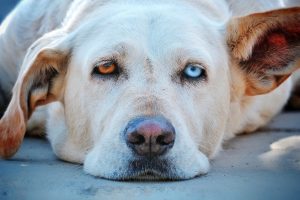
Hidden danger’s when feeding cooked chicken & rice to your dog My dog has an upset stomach..help! I think the first time I was told to feed chicken & rice to my poorly dog by my vet was some 30
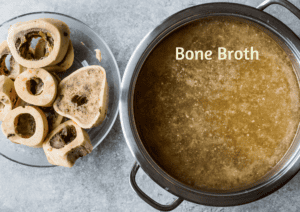
Giving your dog bone broth has huge health benefits. Bone broth for dogs can not only help to support their gut & joints but will aid in supporting their overall immunity.From puppies to the elderly, it will benefit them incredibly.Bone
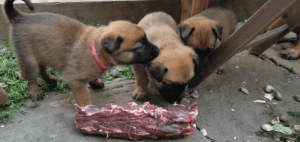
You can start to raw feed a puppy at any age. Some breeders are known to wean litters of pups onto raw once they are finished with feeding from the dam (mum). If your puppy has been weaned onto a

Fill in the form below to sign up to the Nellies Nibbles newsletter
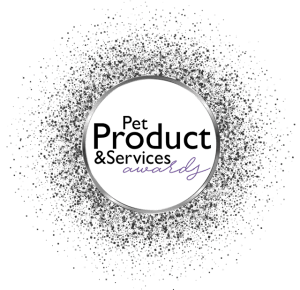
Winner of Rising Star Award in Canine Nutrition 2020,
South West England